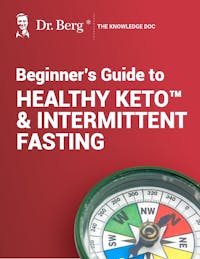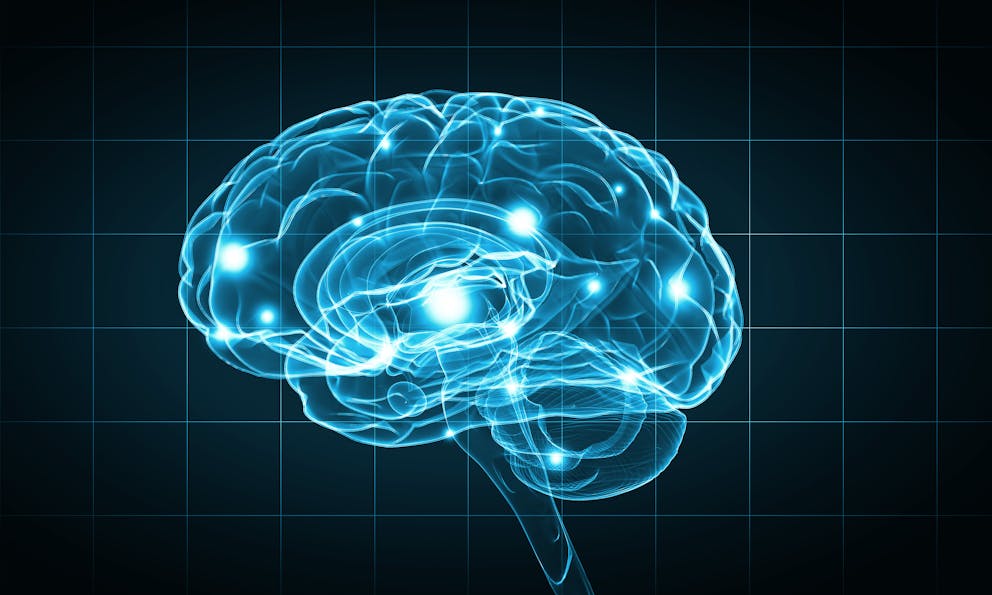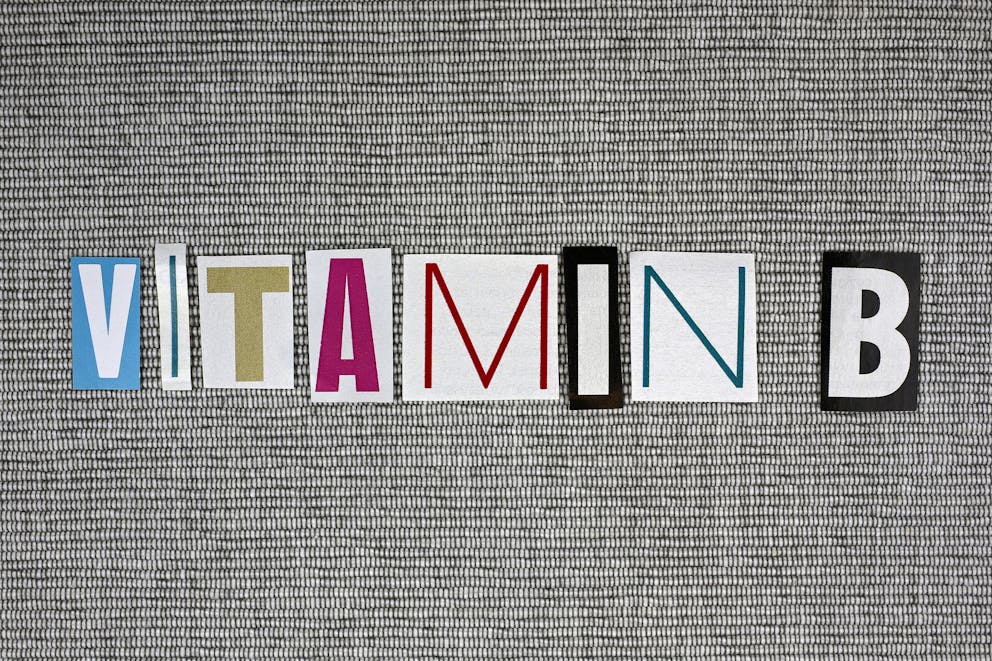Organ Meat Benefits: 10 Reasons to Eat More Organ Meat

How to Read Your Body
Learn to recognize common symptoms and uncover their underlying health issues
Understand the signs of nutrient deficiencies to manage your health
Explore the four metabolic body types and the core factors that influence them
Interpret your body's signals from head to toe to identify potential health concerns

How to Read Your Body
Learn to recognize common symptoms and uncover their underlying health issues
Understand the signs of nutrient deficiencies to manage your health
Explore the four metabolic body types and the core factors that influence them
Interpret your body's signals from head to toe to identify potential health concerns

How to Read Your Body
Learn to recognize common symptoms and uncover their underlying health issues
Understand the signs of nutrient deficiencies to manage your health
Explore the four metabolic body types and the core factors that influence them
Interpret your body's signals from head to toe to identify potential health concerns

How to Read Your Body
Learn to recognize common symptoms and uncover their underlying health issues
Understand the signs of nutrient deficiencies to manage your health
Explore the four metabolic body types and the core factors that influence them
Interpret your body's signals from head to toe to identify potential health concerns

How to Read Your Body
Learn to recognize common symptoms and uncover their underlying health issues
Understand the signs of nutrient deficiencies to manage your health
Explore the four metabolic body types and the core factors that influence them
Interpret your body's signals from head to toe to identify potential health concerns

How to Read Your Body
Learn to recognize common symptoms and uncover their underlying health issues
Understand the signs of nutrient deficiencies to manage your health
Explore the four metabolic body types and the core factors that influence them
Interpret your body's signals from head to toe to identify potential health concerns

How to Read Your Body
Learn to recognize common symptoms and uncover their underlying health issues
Understand the signs of nutrient deficiencies to manage your health
Explore the four metabolic body types and the core factors that influence them
Interpret your body's signals from head to toe to identify potential health concerns

How to Read Your Body
Learn to recognize common symptoms and uncover their underlying health issues
Understand the signs of nutrient deficiencies to manage your health
Explore the four metabolic body types and the core factors that influence them
Interpret your body's signals from head to toe to identify potential health concerns

How to Read Your Body
Learn to recognize common symptoms and uncover their underlying health issues
Understand the signs of nutrient deficiencies to manage your health
Explore the four metabolic body types and the core factors that influence them
Interpret your body's signals from head to toe to identify potential health concerns

How to Read Your Body
Learn to recognize common symptoms and uncover their underlying health issues
Understand the signs of nutrient deficiencies to manage your health
Explore the four metabolic body types and the core factors that influence them
Interpret your body's signals from head to toe to identify potential health concerns

How to Read Your Body
Learn to recognize common symptoms and uncover their underlying health issues
Understand the signs of nutrient deficiencies to manage your health
Explore the four metabolic body types and the core factors that influence them
Interpret your body's signals from head to toe to identify potential health concerns

How to Read Your Body
Learn to recognize common symptoms and uncover their underlying health issues
Understand the signs of nutrient deficiencies to manage your health
Explore the four metabolic body types and the core factors that influence them
Interpret your body's signals from head to toe to identify potential health concerns

How to Read Your Body
Learn to recognize common symptoms and uncover their underlying health issues
Understand the signs of nutrient deficiencies to manage your health
Explore the four metabolic body types and the core factors that influence them
Interpret your body's signals from head to toe to identify potential health concerns

How to Read Your Body
Learn to recognize common symptoms and uncover their underlying health issues
Understand the signs of nutrient deficiencies to manage your health
Explore the four metabolic body types and the core factors that influence them
Interpret your body's signals from head to toe to identify potential health concerns

How to Read Your Body
Learn to recognize common symptoms and uncover their underlying health issues
Understand the signs of nutrient deficiencies to manage your health
Explore the four metabolic body types and the core factors that influence them
Interpret your body's signals from head to toe to identify potential health concerns

How to Read Your Body
Learn to recognize common symptoms and uncover their underlying health issues
Understand the signs of nutrient deficiencies to manage your health
Explore the four metabolic body types and the core factors that influence them
Interpret your body's signals from head to toe to identify potential health concerns

How to Read Your Body
Learn to recognize common symptoms and uncover their underlying health issues
Understand the signs of nutrient deficiencies to manage your health
Explore the four metabolic body types and the core factors that influence them
Interpret your body's signals from head to toe to identify potential health concerns

How to Read Your Body
Learn to recognize common symptoms and uncover their underlying health issues
Understand the signs of nutrient deficiencies to manage your health
Explore the four metabolic body types and the core factors that influence them
Interpret your body's signals from head to toe to identify potential health concerns

How to Read Your Body
Learn to recognize common symptoms and uncover their underlying health issues
Understand the signs of nutrient deficiencies to manage your health
Explore the four metabolic body types and the core factors that influence them
Interpret your body's signals from head to toe to identify potential health concerns

How to Read Your Body
Learn to recognize common symptoms and uncover their underlying health issues
Understand the signs of nutrient deficiencies to manage your health
Explore the four metabolic body types and the core factors that influence them
Interpret your body's signals from head to toe to identify potential health concerns

How to Read Your Body
Learn to recognize common symptoms and uncover their underlying health issues
Understand the signs of nutrient deficiencies to manage your health
Explore the four metabolic body types and the core factors that influence them
Interpret your body's signals from head to toe to identify potential health concerns

Beginner’s Guide to Healthy Keto & Intermittent Fasting
Receive a step-by-step guide to starting Healthy Keto® and intermittent fasting
Learn about foundational principles and best practices for beginners
Get detailed visual guidance on portion sizes and meal composition
Discover how to set achievable goals and monitor your progress
Find practical tips for overcoming common challenges and staying motivated

Beginner’s Guide to Healthy Keto & Intermittent Fasting
Receive a step-by-step guide to starting Healthy Keto® and intermittent fasting
Learn about foundational principles and best practices for beginners
Get detailed visual guidance on portion sizes and meal composition
Discover how to set achievable goals and monitor your progress
Find practical tips for overcoming common challenges and staying motivated

Beginner’s Guide to Healthy Keto & Intermittent Fasting
Receive a step-by-step guide to starting Healthy Keto® and intermittent fasting
Learn about foundational principles and best practices for beginners
Get detailed visual guidance on portion sizes and meal composition
Discover how to set achievable goals and monitor your progress
Find practical tips for overcoming common challenges and staying motivated

Beginner’s Guide to Healthy Keto & Intermittent Fasting
Receive a step-by-step guide to starting Healthy Keto® and intermittent fasting
Learn about foundational principles and best practices for beginners
Get detailed visual guidance on portion sizes and meal composition
Discover how to set achievable goals and monitor your progress
Find practical tips for overcoming common challenges and staying motivated

Beginner’s Guide to Healthy Keto & Intermittent Fasting
Receive a step-by-step guide to starting Healthy Keto® and intermittent fasting
Learn about foundational principles and best practices for beginners
Get detailed visual guidance on portion sizes and meal composition
Discover how to set achievable goals and monitor your progress
Find practical tips for overcoming common challenges and staying motivated

Beginner’s Guide to Healthy Keto & Intermittent Fasting
Receive a step-by-step guide to starting Healthy Keto® and intermittent fasting
Learn about foundational principles and best practices for beginners
Get detailed visual guidance on portion sizes and meal composition
Discover how to set achievable goals and monitor your progress
Find practical tips for overcoming common challenges and staying motivated

Beginner’s Guide to Healthy Keto & Intermittent Fasting
Receive a step-by-step guide to starting Healthy Keto® and intermittent fasting
Learn about foundational principles and best practices for beginners
Get detailed visual guidance on portion sizes and meal composition
Discover how to set achievable goals and monitor your progress
Find practical tips for overcoming common challenges and staying motivated

Beginner’s Guide to Healthy Keto & Intermittent Fasting
Receive a step-by-step guide to starting Healthy Keto® and intermittent fasting
Learn about foundational principles and best practices for beginners
Get detailed visual guidance on portion sizes and meal composition
Discover how to set achievable goals and monitor your progress
Find practical tips for overcoming common challenges and staying motivated

Beginner’s Guide to Healthy Keto & Intermittent Fasting
Receive a step-by-step guide to starting Healthy Keto® and intermittent fasting
Learn about foundational principles and best practices for beginners
Get detailed visual guidance on portion sizes and meal composition
Discover how to set achievable goals and monitor your progress
Find practical tips for overcoming common challenges and staying motivated

Beginner’s Guide to Healthy Keto & Intermittent Fasting
Receive a step-by-step guide to starting Healthy Keto® and intermittent fasting
Learn about foundational principles and best practices for beginners
Get detailed visual guidance on portion sizes and meal composition
Discover how to set achievable goals and monitor your progress
Find practical tips for overcoming common challenges and staying motivated

Beginner’s Guide to Healthy Keto & Intermittent Fasting
Receive a step-by-step guide to starting Healthy Keto® and intermittent fasting
Learn about foundational principles and best practices for beginners
Get detailed visual guidance on portion sizes and meal composition
Discover how to set achievable goals and monitor your progress
Find practical tips for overcoming common challenges and staying motivated

Beginner’s Guide to Healthy Keto & Intermittent Fasting
Receive a step-by-step guide to starting Healthy Keto® and intermittent fasting
Learn about foundational principles and best practices for beginners
Get detailed visual guidance on portion sizes and meal composition
Discover how to set achievable goals and monitor your progress
Find practical tips for overcoming common challenges and staying motivated

Beginner’s Guide to Healthy Keto & Intermittent Fasting
Receive a step-by-step guide to starting Healthy Keto® and intermittent fasting
Learn about foundational principles and best practices for beginners
Get detailed visual guidance on portion sizes and meal composition
Discover how to set achievable goals and monitor your progress
Find practical tips for overcoming common challenges and staying motivated

Beginner’s Guide to Healthy Keto & Intermittent Fasting
Receive a step-by-step guide to starting Healthy Keto® and intermittent fasting
Learn about foundational principles and best practices for beginners
Get detailed visual guidance on portion sizes and meal composition
Discover how to set achievable goals and monitor your progress
Find practical tips for overcoming common challenges and staying motivated

Beginner’s Guide to Healthy Keto & Intermittent Fasting
Receive a step-by-step guide to starting Healthy Keto® and intermittent fasting
Learn about foundational principles and best practices for beginners
Get detailed visual guidance on portion sizes and meal composition
Discover how to set achievable goals and monitor your progress
Find practical tips for overcoming common challenges and staying motivated

Beginner’s Guide to Healthy Keto & Intermittent Fasting
Receive a step-by-step guide to starting Healthy Keto® and intermittent fasting
Learn about foundational principles and best practices for beginners
Get detailed visual guidance on portion sizes and meal composition
Discover how to set achievable goals and monitor your progress
Find practical tips for overcoming common challenges and staying motivated

Beginner’s Guide to Healthy Keto & Intermittent Fasting
Receive a step-by-step guide to starting Healthy Keto® and intermittent fasting
Learn about foundational principles and best practices for beginners
Get detailed visual guidance on portion sizes and meal composition
Discover how to set achievable goals and monitor your progress
Find practical tips for overcoming common challenges and staying motivated

Beginner’s Guide to Healthy Keto & Intermittent Fasting
Receive a step-by-step guide to starting Healthy Keto® and intermittent fasting
Learn about foundational principles and best practices for beginners
Get detailed visual guidance on portion sizes and meal composition
Discover how to set achievable goals and monitor your progress
Find practical tips for overcoming common challenges and staying motivated

Beginner’s Guide to Healthy Keto & Intermittent Fasting
Receive a step-by-step guide to starting Healthy Keto® and intermittent fasting
Learn about foundational principles and best practices for beginners
Get detailed visual guidance on portion sizes and meal composition
Discover how to set achievable goals and monitor your progress
Find practical tips for overcoming common challenges and staying motivated

Beginner’s Guide to Healthy Keto & Intermittent Fasting
Receive a step-by-step guide to starting Healthy Keto® and intermittent fasting
Learn about foundational principles and best practices for beginners
Get detailed visual guidance on portion sizes and meal composition
Discover how to set achievable goals and monitor your progress
Find practical tips for overcoming common challenges and staying motivated

Beginner’s Guide to Healthy Keto & Intermittent Fasting
Receive a step-by-step guide to starting Healthy Keto® and intermittent fasting
Learn about foundational principles and best practices for beginners
Get detailed visual guidance on portion sizes and meal composition
Discover how to set achievable goals and monitor your progress
Find practical tips for overcoming common challenges and staying motivated
Amidst the search for the ultimate superfoods, organ meats are at the top of the list. While organ meat benefits have been widely disregarded in the West and placed on the back burner for over a century, organ meats are now gaining attention as more people seek to enhance their health and fitness with quality nutrition.
Learn about ten impressive organ meat benefits and learn why regularly consuming organ meats helps contribute to a nutrient-dense diet.
What is organ meat?
Organ meat, also known as offal meat, refers to the organs from butchered animals such as cows, pigs, lamb, chicken, duck, and fish.
The most commonly consumed organ meats include:
Liver
Heart
Kidney
Brain
Intestines
Organ meats can be consumed in a variety of ways. They can be mixed into ground beef or pork and turned into flavorful burger patties, meatballs, or sausages. Organ meats can also be sautéd, reduced into a broth, or dehydrated and powdered into an unsuspecting supplement.

10 organ meat benefits
In cultures worldwide, organ meats are treasured for their abundance of essential nutrients and health benefits.
As explained by Dr. Berg, “Organ meats are among the most nutrient-dense foods on the planet and provide up to 100 times more concentrated and bioavailable nutrients than muscle meat.”
Here are ten benefits of consuming organ meats.
1. Reduced risk of heart disease
Beef heart meat and fatty fish liver, such as cod liver, are rich sources of coenzyme Q10 (CoQ10) and omega-3 fatty acids, known for their heart-protective properties.
Research published in the Journal of Pharmacy & BioAllied Sciences deemed CoQ10 one of the most significant lipid antioxidants that may help prevent or manage cardiovascular disease risk factors such as high blood pressure, obesity, and premature aging.
In addition, the rich omega-3 content of organ meats helps reduce inflammation throughout the body, including the cardiovascular system, linked to a lower risk of heart disease.
Synergistically, CoQ10 and omega-3 fatty acids promote balanced cholesterol and triglyceride levels, creating a more favorable environment for cardiovascular health and reducing the risk of heart disease and stroke.
 2. Supports brain function
2. Supports brain function
Eating organ meat such as liver and brain can help boost brain function and mental clarity due to their high omega-3 fatty acid and B vitamin content.
Both omega-3 fatty acids and B vitamins play a crucial role in nerve health, neurotransmitter balance, and nervous system function, all of which support brain health and cognition.
Additionally, beef and chicken liver are excellent food sources of choline, which supports cognitive function due to its role in providing structural support to brain cells and neurons.
3. Helps prevent anemia
Although it’s often believed that muscle meats are top sources of iron, pork liver has one of the highest bioavailable iron content known as heme iron.
Heme iron is more readily absorbed by the body than iron found in plant foods, which isn’t very bioavailable and requires vitamin C for optimal absorption.
Maintaining healthy iron levels is vital to preventing health issues such as anemia, promoting the body’s oxygen transport, and improving overall energy levels.

4. Promotes optimal B vitamin levels
Organ meats are among the richest sources of highly bioavailable B vitamins.
The liver, in particular, is loaded with B vitamins, which play a pivotal role in energy production, DNA repair, the formation of red blood cells, and cognitive function.
5. Excellent source of protein
Organ meats are among the best sources of protein as they include all nine essential amino acids needed for muscle repair, growth, and maintenance.
6. Helps combat oxidative stress
Rich in alpha-lipoic acid (ALA), organ meats provide a potent antioxidant boost that helps reduce oxidative stress, promotes energy production, and supports optimal cellular function.
In addition, ALA helps regenerate other essential antioxidant nutrients, such as vitamins C and E, and enhances mitochondrial function, which promotes cellular health and longevity.

7. Nutritional powerhouse
Organ meats are rich sources of essential minerals, such as magnesium, selenium, and zinc, which are vital for various bodily functions, including enzymatic activity, immune response, and DNA synthesis.
Mineral deficiencies can lead to various health issues and are linked to impaired brain function, weakened bones, thyroid dysfunction, and compromised immune defenses.
8. Supports hormone balance
It’s well known that certain vitamins and minerals, many of which are abundantly present in organ meats, are pivotal for hormonal balance.
Zinc stands out for its critical role in the endocrine system, which has been highlighted in a study published in Nutrients, revealing that zinc plays a significant role in the reproductive system of both sexes.
Evidence suggests that zinc supplementation may benefit women with hormonal imbalances such as polycystic ovary syndrome (PCOS) and dysmenorrhea by improving insulin sensitivity, reducing menstrual pain, and balancing hormone levels.
Furthermore, zinc plays a crucial role in maintaining essential aspects of male fertility, including promoting balanced testosterone levels and maintaining sperm count, density, and motility.

9. Rich in fat-soluble vitamins
Organ meats are rich in fat-soluble vitamins such as vitamins A, D, and K, which are essential for health.
The liver is notably high in vitamins A and D, supporting vision, immunity, and skin, which explains why cod liver oil is an excellent source of fat-soluble vitamins crucial for supporting bone health, strong immune defenses, and mood regulation.
Additionally, vitamin K2, found in grass-fed animal livers, is vital for blood clotting and bone health by promoting calcium deposition into bone tissue.
10. May lower the risk of liver disease
Choline is especially abundant in liver meat and has been found to help prevent and repair liver damage by promoting the removal of fat from liver cells.
Research published in Hepatobiliary Surgery and Nutrition found that participants with the highest consumption of animal organ meat had a significantly lower risk of developing severe non-alcoholic fatty liver disease (NAFLD).

What are the most nutritious organ meats?
The health benefits of organ meats cannot be ignored. They’re packed with essential vitamins, minerals, and antioxidants, and each type of organ meat brings its own unique set of benefits to the table.
There are many organ meats to choose from, and here is a selection of the most nutrient-rich organ meats, along with their nutritional values based on a three-ounce serving.
Beef liver
Calories: 162
Protein: 25 g
Fat: 4.5 g
Vitamin A: 8020 mcg
Vitamin B12: 60 mcg
Coenzyme Q10: 3.9 mg
Choline: 362 mg
Zinc: 4.5 mg
Iron: 5.5 mg
Copper: 12.2 mg
Selenium: 31 mcg
Despite common misconceptions about the liver storing toxins, its primary function is detoxifying and eliminating toxins rather than storing them.
The nutrients found in liver meat, especially when sourced from grass-fed, pasture-raised animals, are in their most potent and bioavailable form, offering unmatched nutritional benefits without the concern of toxin accumulation.

Beef heart
Calories: 95
Protein: 15 g
Fat: 3.3 g
Vitamin B12: 7.2 mcg
Coenzyme Q10: 11.3 mg
Iron: 3.6 mg
Zinc: 1.4 mg
Selenium: 33 mcg
Beef heart is exceptionally rich in CoQ10, which is crucial for heart health and energy production, and heart consumption can contribute to a significant amount of iron and zinc.
Beef kidney
Calories: 112
Protein: 15 g
Fat: 2.5 g
Vitamin B12: 23 mcg
Selenium: 119 mcg
Potassium: 222 mg
Iron: 3.9 mg
Zinc: 1.6 mg
The high selenium content in kidney meat supports immune function, thyroid hormone synthesis, reproductive health, and DNA protection.
Kidneys are also abundant in highly bioavailable B vitamins, particularly vitamin B12, which helps support nervous system health and cognitive functions.
In addition, kidneys are an excellent source of iron, providing a little more than 20 percent of the recommended daily allowance (RDA) in a three-ounce serving.

Where to find organ meat
When incorporating organ meats into your diet, opt for grass-fed or grass-finished, pasture-raised, ethically sourced organ meats to get the most nutrient-dense meat free of toxins, hormones, and antibiotics.
Here are some of the best places to find high-quality organ meats.
Butcher shops
Local butchers are a great resource to purchase most organ meats. They often have a wide variety of options and can provide detailed information about the source of their meats.
Specialty meat delivery farms
With the rise of online shopping, many farms started to specialize in delivering high-quality meats directly to your door.
These services offer a variety of local, high-quality organ meats, and some also provide pre-made beef organ meat sausages and burgers.
Ethnic markets
Ethnic markets can be a goldmine for finding organ meats.
These markets cater to cuisines that traditionally value and utilize organ meats and will often offer various organ meat products.
Supplements
Organ meats can be found in supplemental form from a variety of online and in-store retailers.
Supplementation is an effective and convenient solution for those who don't like the flavor of organ meat or don’t have the time to prepare new and exotic dishes.

Possible downsides of organ meat
Although organ meats offer a range of impressive health benefits, it’s essential to be aware of the potential downsides of consuming them.
Flavor and aesthetics
Organ meats may not be aesthetically or texturally pleasing, especially if you're not accustomed to them.
Additionally, due to their high vitamin and mineral content, organ meats can have strong and distinct flavor profiles, which explains why they’re often described as an acquired taste.
Risk of nutrient toxicity
While a high vitamin and mineral content is usually considered a benefit, “too much of a good thing” can apply to organ meat consumption.
When eating organ meats, it's important to track portion sizes as the high nutrient content may increase the risk of vitamin or mineral toxicity in certain individuals.
Individuals with hemochromatosis, a genetic condition characterized by excessive iron absorption, should exercise caution when consuming organ meats such as liver and possibly avoid them altogether.
Pregnant women are advised to avoid excessive intake of vitamin A, especially in the form of retinol, which has been linked to birth defects.
Similarly, excessive selenium intake at levels above 400 micrograms daily can result in selenium toxicity, known as selenosis, which can cause severe and possibly life-threatening symptoms.
To minimize the risk of adverse health effects, it’s recommended that pregnant women, the elderly, or those managing medical issues seek guidance from a healthcare professional before incorporating dietary supplements or making significant dietary changes.

Key takeaways
Organ meat benefits include an impressive array of highly bioavailable essential nutrients, making them a vital component of a nutrient-rich diet.
These superfoods are not only dense in vitamins and minerals but also support various bodily functions, such as heart health, hormone regulation, and brain function while offering a high-quality source of protein.
When sourced from grass-fed, pasture-raised animals, organ meats can significantly enhance the nutritional quality of your diet and improve overall health and wellness.
FAQ
1. What are the top organ meat benefits?
Organ meats are rich sources of various nutrients, including vitamins, minerals, omega-3 fatty acids, CoQ10, and choline.
Regularly consuming organ meats can help enhance brain and liver health, boost immune defenses, support heart health, prevent anemia, and reduce inflammation.
2. Is organ meat healthy?
Yes, organ meats are incredibly healthy. They are packed with essential nutrients that support various bodily functions such as brain health, heart health, and immunity, and have anti-inflammatory properties.
3. What organ meat is healthiest?
Liver meat is one of the healthiest organ meat options due to its exceptionally high nutrient content. Liver meat is a rich source of vitamins A and D, B vitamins, iron, choline, and other essential nutrients.
4. Who should not eat liver?
Pregnant women should limit or avoid liver due to its exceptionally high vitamin A content, which may increase the risk of birth defects.
In addition, individuals with elevated iron levels, known as hemochromatosis, should limit iron-rich foods such as liver and other organ meats to minimize the risk of iron toxicity.
5. Why don't we eat organ meat?
Cultural shifts and evolving dietary preferences have led to a decline in organ meat consumption. Historically valued for nutrition, availability, and affordability, organ meats eventually were overshadowed by leaner cuts due to changing tastes and perceptions of social status.
6. What nutrients are in organ meat?
Organ meats are packed with vitamins A, D, E, and K, B vitamins, essential minerals such as iron, zinc, and selenium, high-quality protein, omega-3 fatty acids, coenzyme CoQ10, and choline.
7. Do organ meats increase testosterone?
Organ meats are rich in zinc and vitamin D, two nutrients linked to reproductive health and the support of hormonal balance, including testosterone.
8. Who shouldn’t eat organ meat?
While safe for most in moderation, individuals who are pregnant or have specific health conditions, such as hemochromatosis or gout, should avoid excessive organ meat intake.
9. Do organ meats increase the risk of mad cow disease?
Eating certain parts of animals, such as beef tongue, brain, and spinal cord tissues, can potentially increase the risk of mad cow disease, also known as bovine spongiform encephalopathy (BSE).
However, thoroughly cooking organ meats and purchasing certified BSE-free products helps significantly minimize the risk of BSE.
Sources
Previous blog
How to Fix Ankle PainTags

Popular
08/21/2024
40.8K views
05/22/2024
37.1K views
11/18/2024
216.6K views
03/18/2024
11/21/2022




